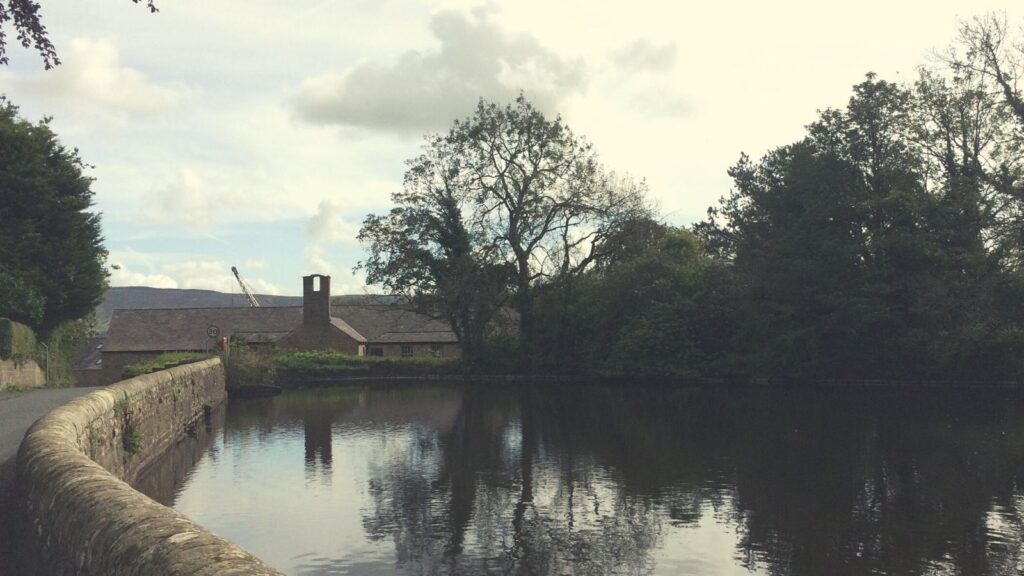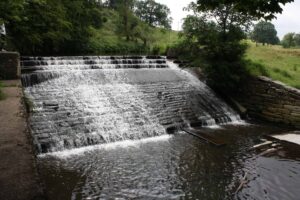Our county has a long and fascinating industrial history, with generations of families working in quarries, coal mines, and of course cotton mills. Lancashire’s mills and rivers are heavily linked, and without the rivers, industrial boom would simply not have been possible.

During the Industrial Revolution the textile industry expanded rapidly. Mill owners were drawn to the area by the hardworking communities, the damp climate (which was ideal for working cotton), and the areas rivers and potential for waterpower.

To harness waterpower weirs were constructed across rivers. These weirs worked by holding water back in mill ponds. Water was then forced through a narrow straight mill race where it built up speed and power. The water was then sent through water wheels which were linked to gears and shafts which ran machinery across multiple floors.
Lancashire’s mill towns grew with thousands of terraced houses built to house workers and their families. There were no planning laws in the 1800s and so often there was no infrastructure for the houses. Instead sewage and waste was transported away from towns in rivers. To make this process effective river beds were lined with concrete and straightened, a bit like the mill races. This meant that the waste was quickly taken away from the towns downstream. Rivers were also used as abstraction points and reservoirs for drinking water.
Thankfully we now have proper sewage treatment works, and our drinking water is controlled and regulated much more closely- but what about the weirs?

Many still stand today and are causing problems hundreds of years later. They break up habitats by restricting the movement of species which is vital for healthy populations, species resilience, migration, and breeding. They also change the flow of the river which can reduce habitat diversity and disturb the natural transportation of sediment. This can, in turn, increase flood risk.
The good news is that we are working hard to make as many of the area’s weirs passable by fish. To do this we either by remove them completely, or create fish passes. This work is costly and takes months of careful planning using computer modelling to measure different options and outcomes. Many factors have to be given consideration, such as how our work will impact river flow, how much it will decrease flood risk, the effects on any other species, and how it will affect landowners and other river users.
The catchment will never be free of weirs, but as long as the rivers are healthy we’re happy to see these reminders of our past. They serve as monument to a time that helped make Lancashire the amazing place it is today!
You can find out more about Lancashire’s heritage, plus discover some amazing circular walks at ribblelifetogether.org
Lancashire’s mills and rivers

